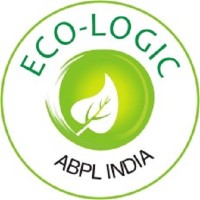In India, sprinkling water for dust suppression is a common practice, especially in areas with high levels of pollution and construction sites. It’s part of a broader cultural and practical approach to managing dust and maintaining cleanliness. Water sprinkling is often seen in urban areas to settle dust on roads and in residential areas to keep the surroundings clean. This practice is also prevalent in industrial settings to control airborne dust particles affecting workers’ health and machinery efficiency.
The aspiration behind such actions is multifaceted:
- Health: Reducing air pollution and respiratory problems caused by dust.
- Cleanliness: Maintaining a clean environment is culturally significant in India.
- Regulatory Compliance: Adhering to government regulations on dust control to avoid penalties
- Application areas
- Roadsides: To prevent dust lift-off from the sides of roads.
- Excavation Sites: For dust control in deep excavation areas.
- Construction Sites: Where controlling dust is a critical concern.
- Landfill Sites: Applied at sanitary landfill locations.
- Coal Fly Ash Transport: During transporting and handling coal fly ash.
- Fly Ash Fields: For dust suppression in areas where fly ash is stored or managed.
- Open Area Control: Used for erosion and dust control in open spaces.
- Parking & Exhibition Areas: For maintenance, soil stabilization, and dust control.
- Stone Crushing Units: To suppress airborne dust particles generated by crushing activities.
- Erosion Control: On embankments, seashores, and riverbed areas to prevent erosion.
- Waste Management: In open vats and underground tunnels for garbage dust suppression.
- Airport Areas: Runways, aprons, hangars, bays, and taxi ports for dust management.
- Bridges and Flyovers: Along the non-traffic areas of bridges and flyovers.
These applications highlight the versatility of Ecozyme-DS in managing and suppressing dust across various environments
How to use
Handheld Sprayers: Handheld or backpack sprayers can distribute an Ecozyme (Calcium Chloride ) solution for smaller areas or more precise applications.
- Garden Hose Attachments: Some products can be designed to attach directly to a garden hose, allowing the user to mix calcium chloride with water and spray the solution easily.
Benefits to dust suppression in a DIY manner around homes, shops, factories
Dust suppression efforts by individuals and communities can significantly impact a place’s Air Quality Index (AQI). AQI is a measure used to communicate how polluted the air is or how contaminated it is forecast to become. By reducing the amount of particulate matter (PM) in the air through dust suppression, the AQI can be improved, leading to better health outcomes for the community.
To assess the effectiveness of a dust suppression spray, several factors can be considered:
- Visual Inspection: The most immediate method is to check the treated area for signs of dust reduction visually.
- PM Measurements: Before and after measurements of PM concentrations can provide quantitative data on the effectiveness of dust suppression.
- Health Impact: Observing any reduction in respiratory issues or other health complaints among the local population can also be an indicator.
- Maintenance Frequency: If the need for maintenance and cleaning of the area decreases, it suggests that the dust suppression method is working effectively.
It’s important to note that the effectiveness of dust suppression sprays depends on various factors such as the velocity of applied water, the size of the nozzle orifice, and the location of the spray nozzles. Low-velocity systems are generally more effective as high-velocity air movement can keep dust particles in suspension. Additionally, the application of dust-suppression water and/or chemicals at transfer points must be controlled automatically so that water is applied only when necessary.
